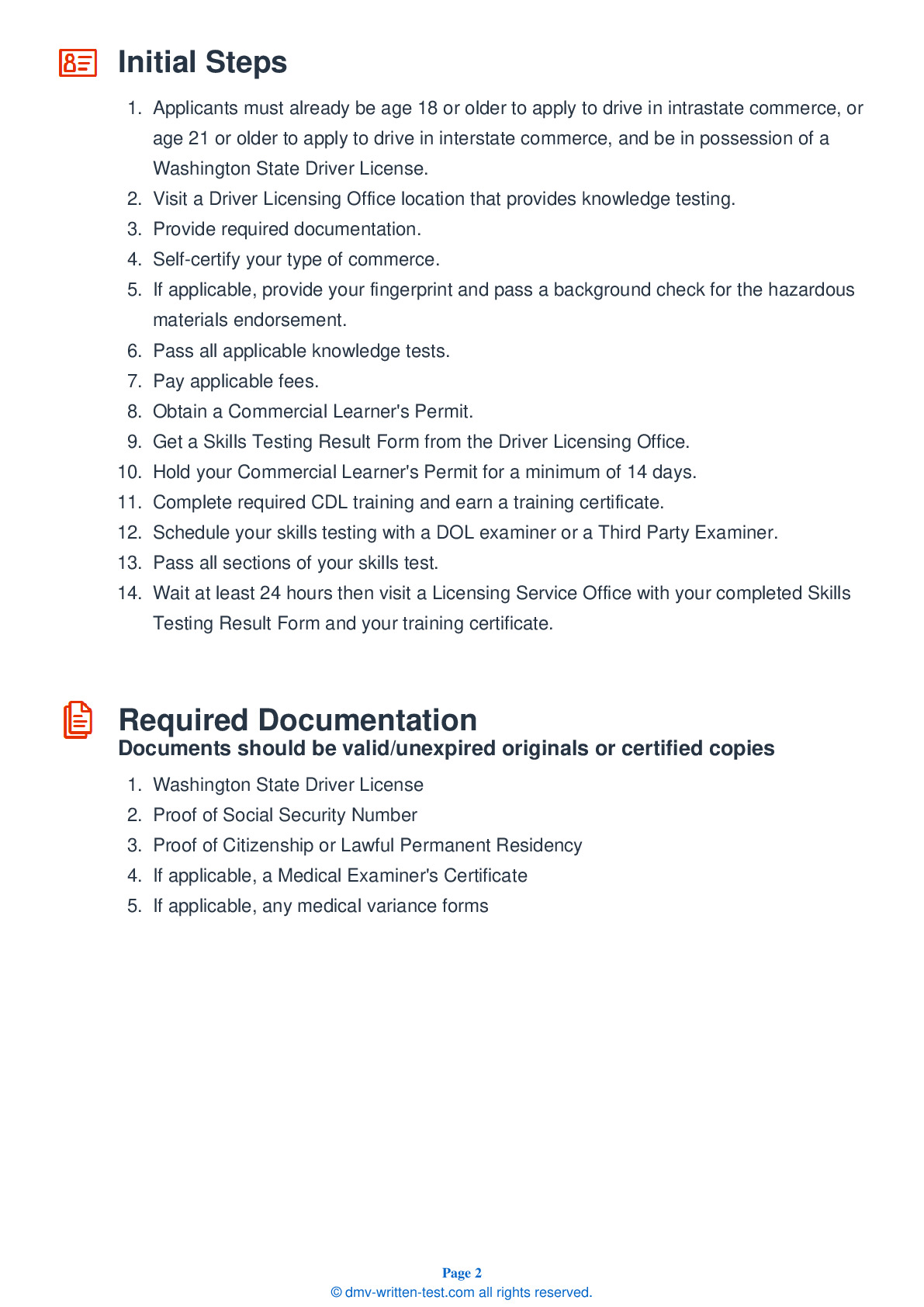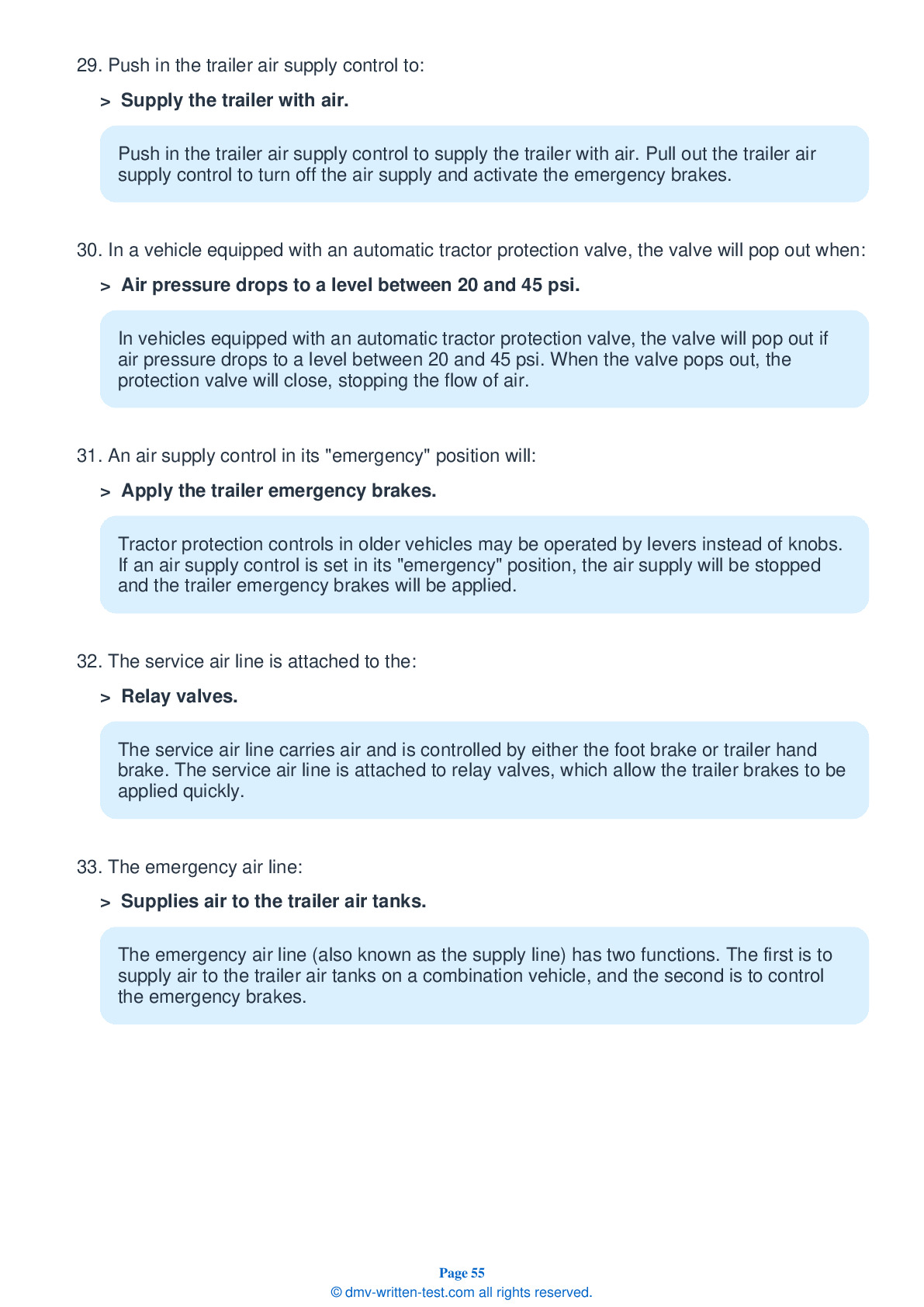Air Brakes
This endorsement is required for driving a vehicle with air brakes. To receive this endorsement, applicants must pass a written test. The test consists of 25 multiple choice questions. Each question has three answer choices. To pass, the applicant must answer at least 20 questions correctly. Test questions come from the Commercial Driver Guide. Questions come from the chapter covering: Air Brakes. The Air Brakes endorsement may be used with the Class A, B or C CDL.
Number of Question
Passing Score
19. Brakes can get out of adjustment quickly, especially:
Explanation
Brakes are particularly prone to getting out of adjustment if they are hot. Be sure to routinely check the adjustment of your brakes. For a vehicle to be safely controlled, all brakes must be properly functioning and adjusted.
20. Braking mechanisms are located inside:
Explanation
Drum brakes are attached to the wheels and located on the axles of a vehicle. The braking mechanisms that cause the vehicle to stop can be found inside of a drum brake.
21. An alcohol evaporator in an air brake system:
Explanation
Some air brake systems include an evaporator that introduces alcohol into the system. The alcohol can help prevent ice from forming within the system.
22. During a static leakage test, what is the maximum leakage rate that is safe for a double combination vehicle?
Explanation
When performing a static leakage test on a double combination vehicle with air brakes, the leakage rate should be no more than 3 psi in one minute. If the air leaks from the air brake system at a quicker rate, the vehicle should not be driven because something likely needs to be repaired.
23. Air storage tanks:
Explanation
In an air brake system, the air storage tanks hold compressed air to be used by the brakes. The number and size of air tanks varies among vehicles.
24. Which of the following is not part of a vehicle’s air brake system?
Explanation
Components of an air brake system include an air compressor, an air compressor governor, air storage tanks, air tank drains, an alcohol evaporator, a safety valve, a brake pedal, foundation brakes, supply pressure gauges, an application pressure gauge, a low air pressure warning signal, a stop light switch, a front brake limiting valve (on some older vehicles), spring brakes, and parking brake controls.
25. The parking brake in a newer vehicle is applied by:
Explanation




